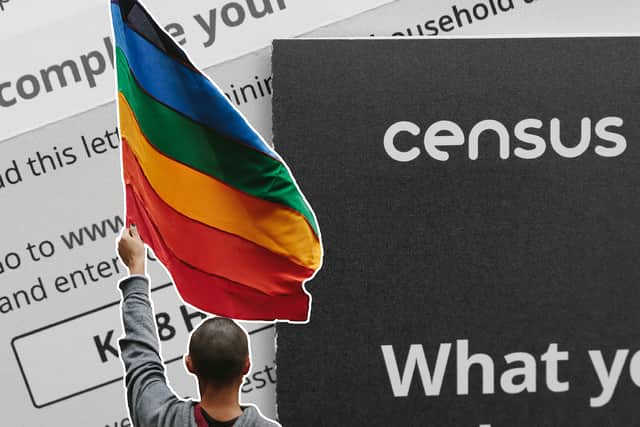Census 2021: how many LGBT+ people are in England and Wales? Gender and sexual orientation data explained
and live on Freeview channel 276
Newly released census data for England and Wales has shown the LGBT+ communities in both nations - with more than a quarter of a million people identifying as a different gender from their registered sex at birth. The data, released by the Office for National Statistics (ONS), is the first time it has been included in the census.
Along with those who identified as a different gender identity, the census data also revealed how many people in England and Wales identified as a member of the LGB+ communities. Charity Stonewall called the inclusion of the data as a “historical step forward”, with LGBT+ people “missing from the national record” for two centuries.
Advertisement
Hide AdAdvertisement
Hide AdResults from the 2021 census has released at staggered dates. Previous data already showed the UK as a changing nation, with Christianity becoming the minority religion for the first time in England and Wales.
The 2021 census also saw people over the age of 16 able to voluntarily provide information on their sexual and gender orientation. Those wanting to keep their answers a secret from family members on the same census form could request a separate code which would allow them to fill it in individually.
ONS director Jen Woolford called the results “critical”. She added: “They will ensure decision-makers have the best information so they can better understand the extent and nature of disadvantage which people may be experiencing in terms of educational outcomes, health, employment and housing.”
What did the 2021 census results show about the LGBT+ community in England and Wales?
Overall, 1.5million people - 3.2% of the population, in England and Wales identified with an LGB+ sexual orientation at the time of the census. 1.5% described themselves as gay or lesbian, 1.3% as bisexual and 0.3% selected ‘other sexual orientation’.
Advertisement
Hide AdAdvertisement
Hide AdThe ONS also confirmed that 262,000 people confirmed that their gender identity was different from that assigned to them at birth. This represents 0.5% of the adult population.


However, 118,000 respondents did not provide further information on how they identified themselves. Of those who did provide further information, 48,000 identified as a trans woman, while another 48,000 people identified as a trans man.
94% of the population answered the voluntary gender identity section of the census, while 92.5% answered the voluntary section on sexual orientation. 89.4% of those who answered identified as straight or heterosexual, while 93.5% said their sex was the same as that registered at their birth.
London had the highest proportion of people identifying as a gender different to that assigned at birth. The capital also had a higher proportion of trans men and women than the rest of England or Wales.
Advertisement
Hide AdAdvertisement
Hide AdBrighton and Hove topped the charts for having the highest proportion of people in the LGBT+ community, with 10.7% of the population identifying as such.
Age range breakdowns are expected to be released by the ONS on 25 January. However, separate data gathering by the ONS over the past few years has already shown an upward trend for younger people (18-24-years-old) identifying as being within the LGBT+ community, with the census data expected to follow this trend.
Why is the data important?
Ms Woolford from the ONS has said that the inclusion of gender and sexual orientation data in the census going forward will allow the group to paint a clearer picture of the lives of those living in the UK. She said: “This is just the first snapshot. In future analysis we will be exploring sexual orientation and gender identity by key demographic variables, such as age and sex, as well as employment, health, education and ethnicity, among others.”
Stonewall chief executive Nancy Kelley hailed the inclusion, saying: “For the past two centuries of data gathering through our national census, LGBTQ+ people have been invisible, with the stories of our communities, our diversity and our lives missing from the national record.
Advertisement
Hide AdAdvertisement
Hide Ad“Today is a historic step forward after decades of Stonewall campaigning to record sexual orientation and gender identity in the census, finally painting an accurate picture of the diverse ‘Rainbow Britain’ that we now live in, where more and more of us are proud to be who we are.”
Comment Guidelines
National World encourages reader discussion on our stories. User feedback, insights and back-and-forth exchanges add a rich layer of context to reporting. Please review our Community Guidelines before commenting.
